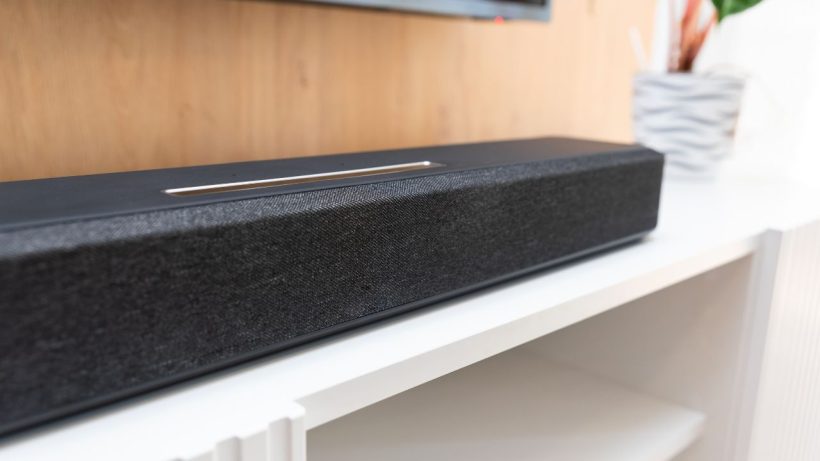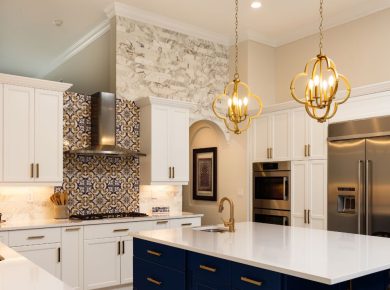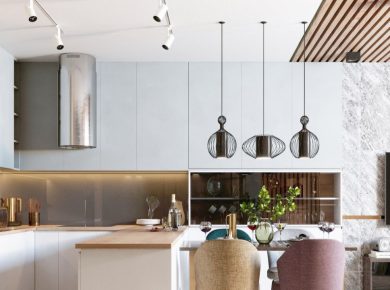Summary
Sonos Soundbar Arc beneath a telly in a lounge, beside Sonos Sub
For a true home cinema feeling, alongside a high-end telly, you also need compatible sound. The focus of televisions usually revolves around resolution, size, and smart features; the sound often gets sidelined. Properly placing a Soundbar can make your movie night thoroughly enjoyable.
Initial Scenario: TV Speakers and Sound Systems
Come the first movie night with mates, it becomes clear that the built-in TV speakers don’t meet high standards. They barely deliver highs and lows—let alone surround sound. A 5.1 or 7.1 system is optimal for home cinema enthusiasts, but it also involves extensive cabling and doesn’t fit in every room.
For quite a while now, single device solutions, Soundbars, have been countering systems with multiple speakers dispersed in the room. Under the compact hood of Soundbars is much more than an elongated speaker. Our tips illustrate how to glean the best from your Soundbar through optimal placement.
- Rooms where a Soundbar delivers quality
Quality Soundbars consist of what’s called a soundbar. Multiple individual speakers within direct sound in all directions, producing a virtual surround effect as the sound is reflected off the walls.
Particularly in elongated rooms, however, sound waves are not evenly distributed and reflected. This is also true for particularly large rooms. In smaller to medium-sized rooms, the surround effect of a Soundbar is ideal—and there’s often insufficient space for multipart systems.
- Achieving optimal sound delivery
To enjoy your Soundbar’s sound, the sound waves need a clear path—obstacles capture sound waves. Even the coffee table between the Soundbar and your sofa can prevent a rounded sound image.
Your Soundbar’s front should never be cluttered with decorative items. Plants, sculptures, and shelves are disruptive elements for sound waves. Try different placements for your inventory. You’ll be astonished by the significant differences.
- The positioning of Soundbar and TV
Just like your telly, the Soundbar finds its best place centrally in front of a wall so that the distance to the side walls is as equal as possible. The distance to you should ideally be at least three metres.
With modern televisions and their large screen diagonals, maintaining the minimum distance to the sofa is a must. If you place the Soundbar below the television, the sound reaches you in sync with the TV picture.
- Maintaining synchrony between picture and sound
Speaking of synchrony: For sound, it’s especially relevant that the Soundbar is centrally and closely placed below the TV. Your telly can either hang on the wall or be on a stand.
When wall-mounting the TV, a distance of ten to fifteen centimetres between the Soundbar and television is optimal: picture and sound come balanced from the same direction, preventing any temporal offset.
- The right spot for your Subwoofer
With a Soundbar with a separate Subwoofer, you need to note the following: Contrary to old practices, you should not place the Subwoofer on the floor and certainly not hide it behind the sofa.
You should position the bass speaker as centrally as possible. The height also matters so that all tones reach the ear unadulterated.
The distance to the wall should be at least ten centimetres. The best position is front between the TV’s stereo speakers and slightly above the floor. The ideal arrangement of the three devices, centrally, from top to bottom is:
Television
Soundbar
Subwoofer
- Don’t hide Soundbar and Subwoofer
Under no circumstances should you place the Soundbar and possibly the Subwoofer in shelves, drawers, or cupboards. Confined sound waves can distribute poorly in the room. For an audible surround sound, it’s crucial that the sound has a clear path to your ears. - Don’t place devices one behind the other
If you opt against wall-mounting the television and Soundbar, it can quickly get crowded on the TV cabinet. The Soundbar should not cover any part of your telly. Otherwise, the picture will be distorted.
You’ll achieve optimal sound with a Soundbar centrally placed below the television, creating an equivalent distribution of sound in the room. You’ll experience optimal, well-distributed sound when you ensure it is placed to prevent any blockages to the sound waves.
- The ideal distance to the Soundbar
There is no fixed rule for the perfect distance to your Soundbar, as room size and personal preferences play a role. However, experts generally recommend a distance of at least three metres.
If the room doesn’t permit this, a minimal distance of one and a half metres suffices, but it can result in a sound experience that lacks detail and depth.
- Achieving realistic sound through damping
For a home cinema feeling, the right acoustics is indispensable. Placing a heavy rug or a similar sound-absorbing material on the floor in front of the television prevents the sound from being overly reflective.
This damping allows you to experience the full breadth of the surround sound, enhancing the cinematic experience. Sound is enriched and deepened, providing a fuller, more realistic experience.
- Extracting more through sound settings
Spend time exploring your Soundbar’s settings. Often, manufacturers offer different sound profiles—each optimized for a specific use case, like movies, music, or voice.
These settings can be tuned to the placement of your Soundbar, helping to perfect sound quality for your specific scenario.
- Synchronising delayed sound
Sometimes, sound delivery may be slightly delayed in comparison to the picture. Many Soundbars have a setting for adjusting the delay between sound and picture, allowing you to synchronize them to your preference. - Controlling the Soundbar automatically through the TV
Modern Soundbars usually support HDMI-CEC, meaning the Soundbar can be controlled through the TV’s remote. This is beneficial, as it allows you to manage volume and power without needing an additional remote.
Conclusion
Positioning your Soundbar optimally can significantly enhance your home cinema experience. Soundbars, with their compact form, can provide rich, detailed sound, equivalent to multipart systems, given the right environment and placement.
For optimal results, it’s crucial to maintain synchrony between picture and sound, place devices centrally, ensure clear paths for sound waves, and consider the room’s acoustics. Adjusting the sound settings and maintaining the recommended distance can further optimize the sound quality, elevating your movie nights to a new level










